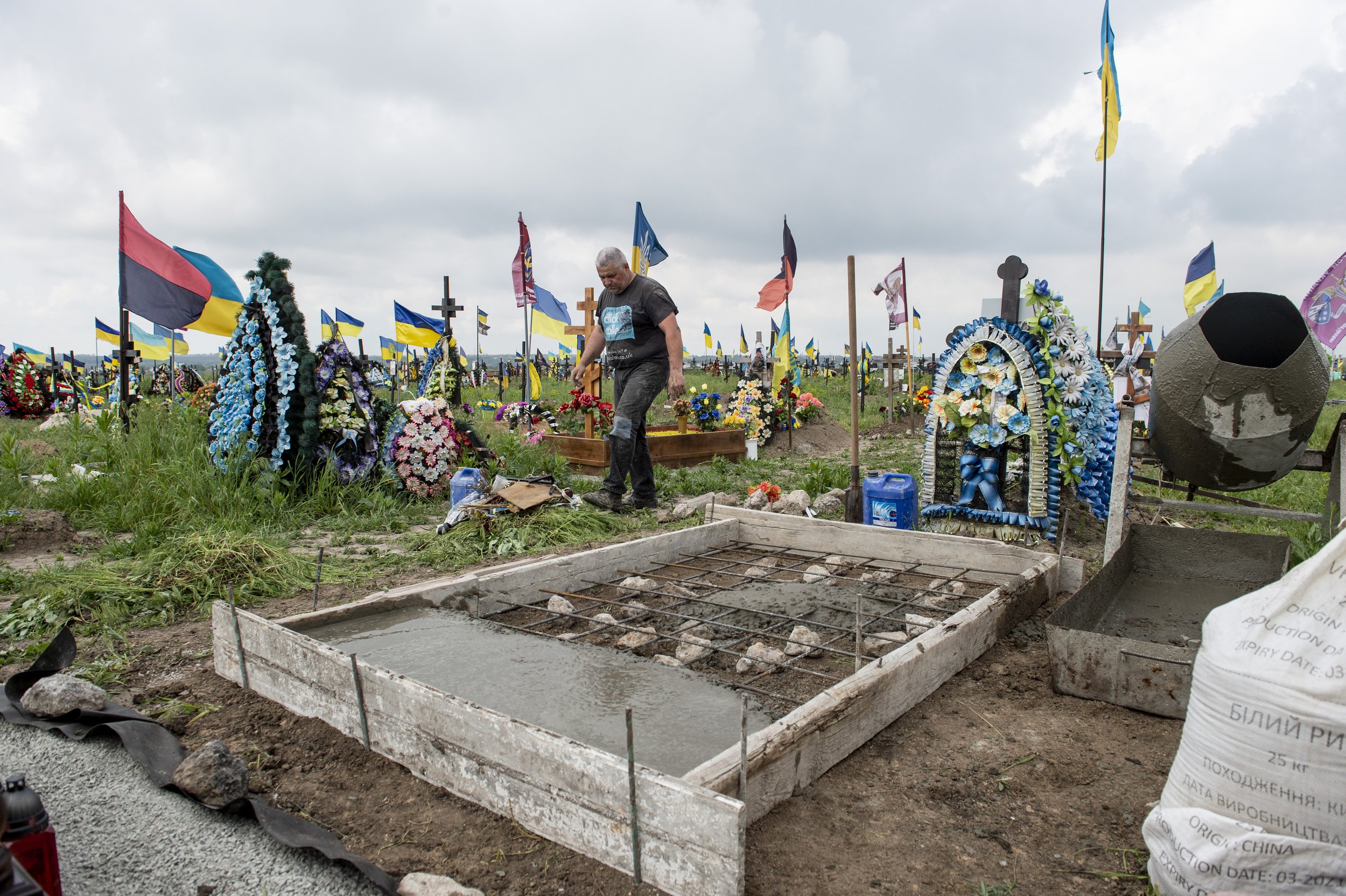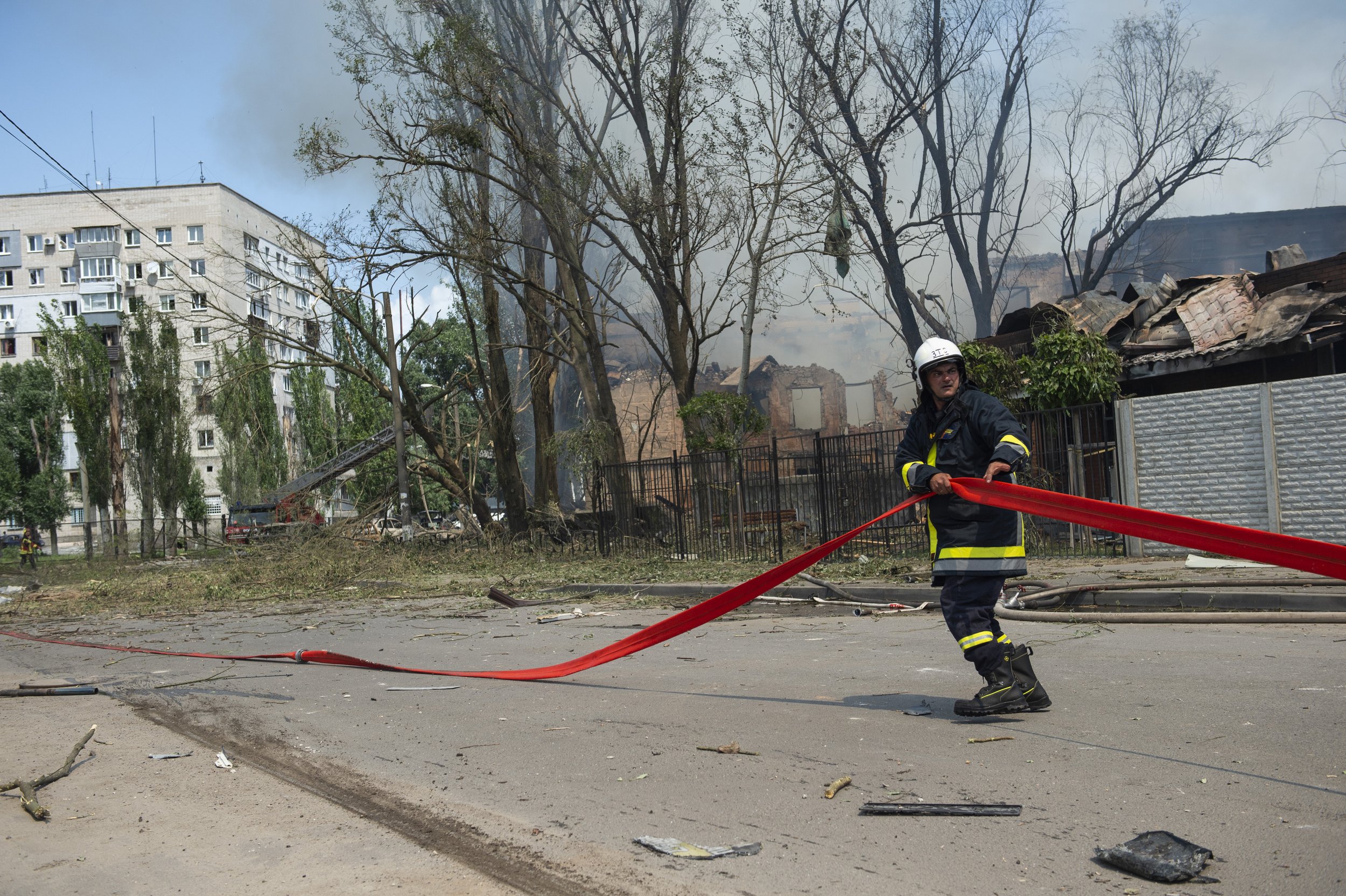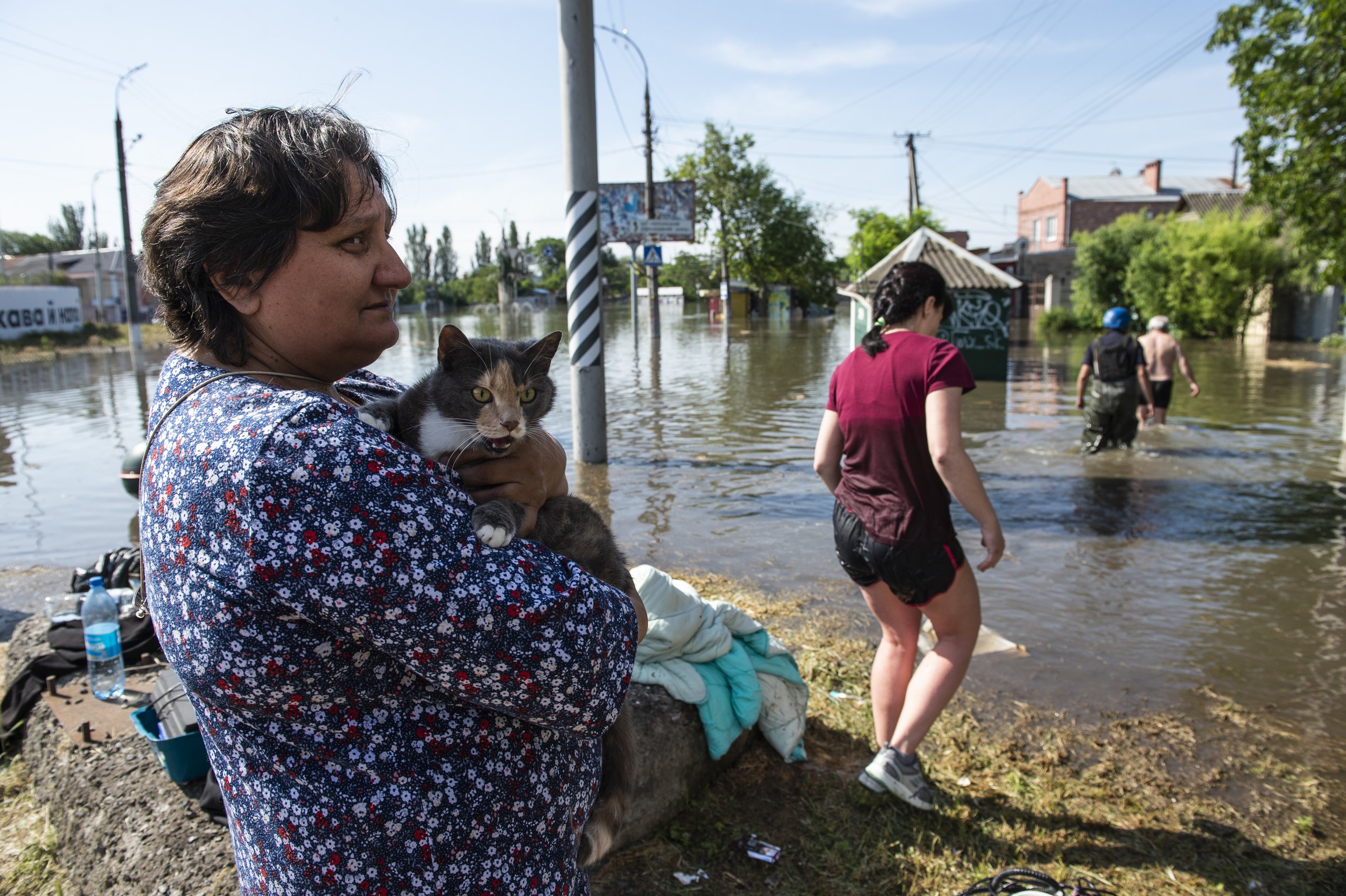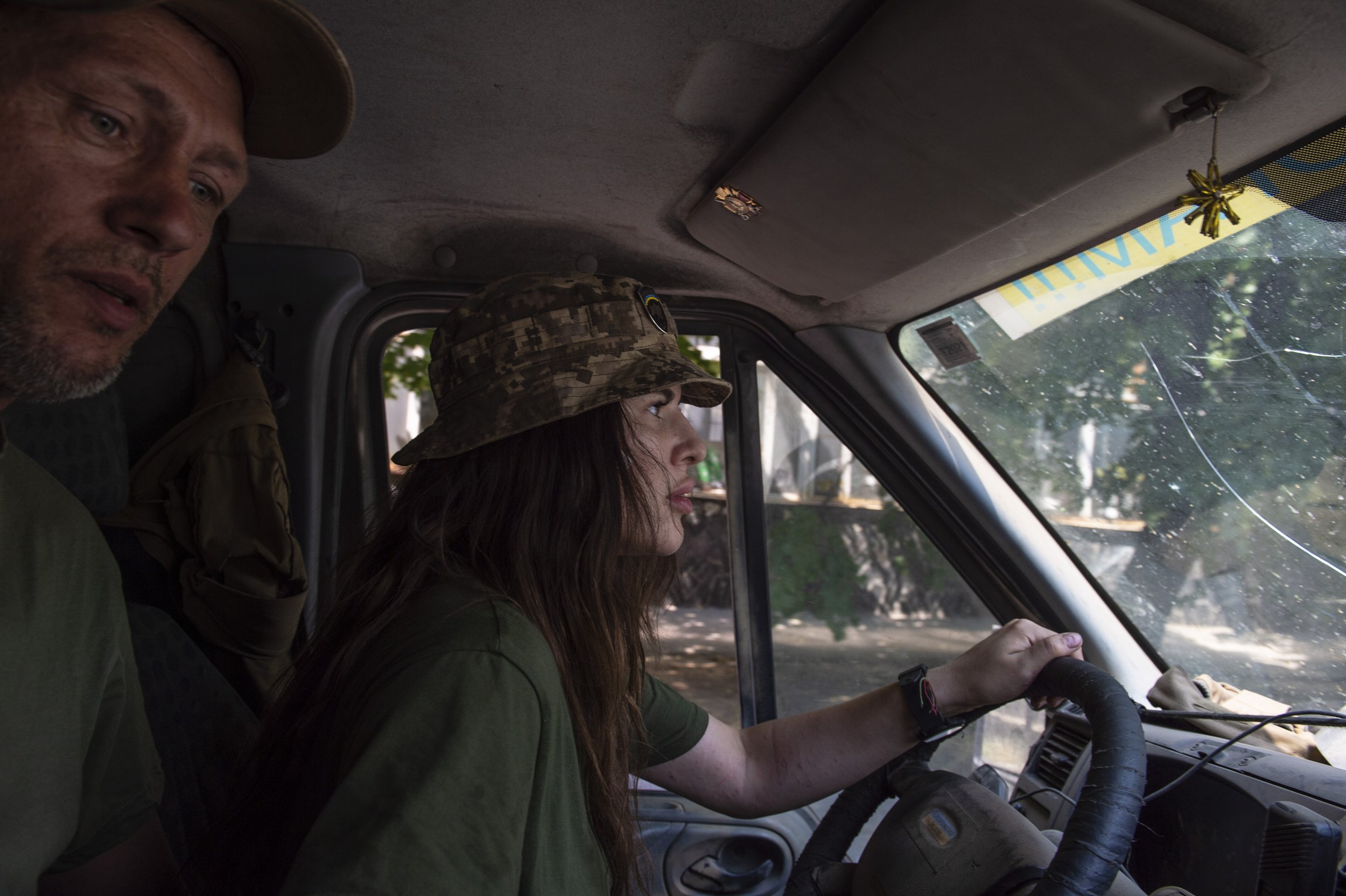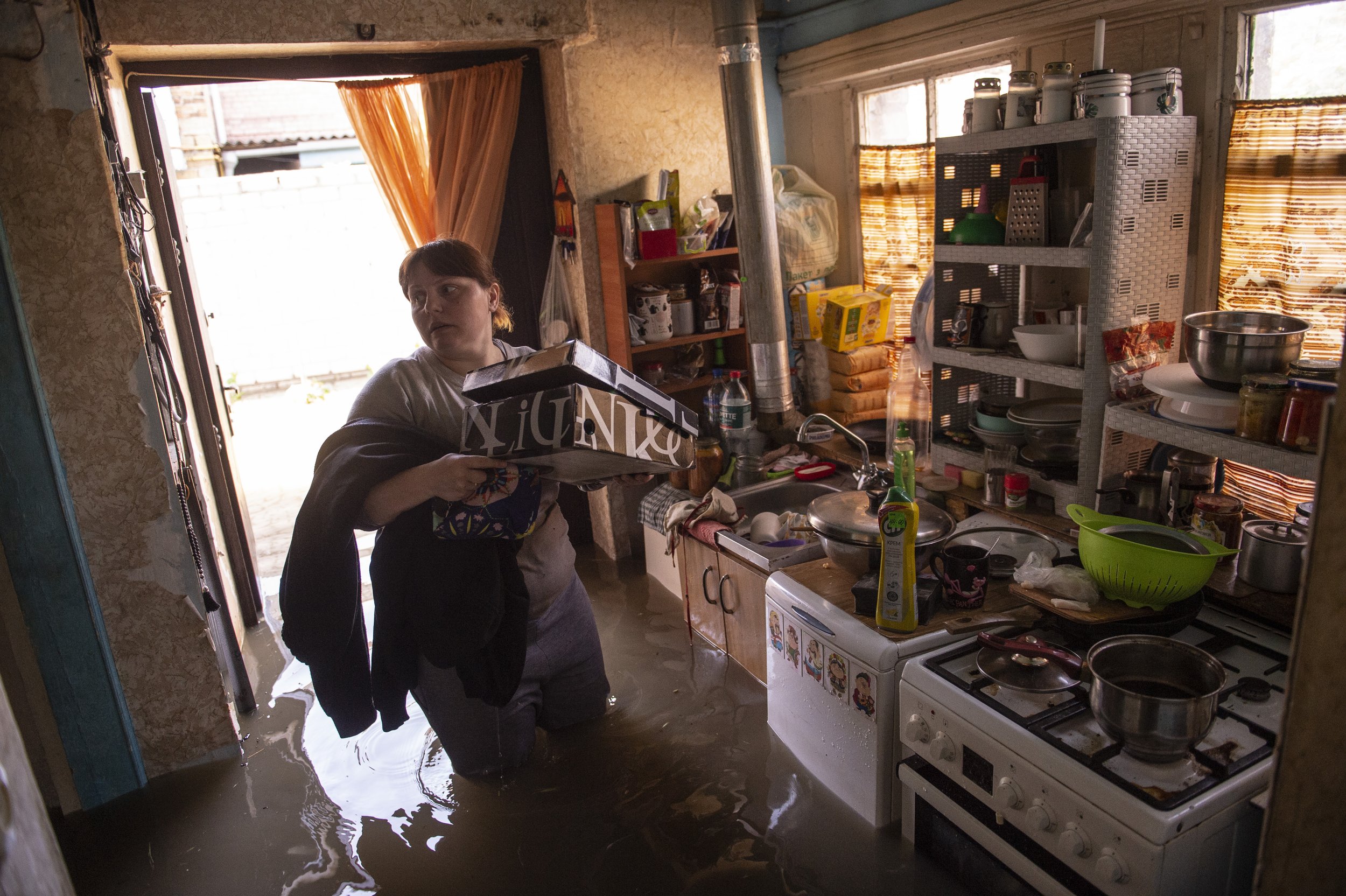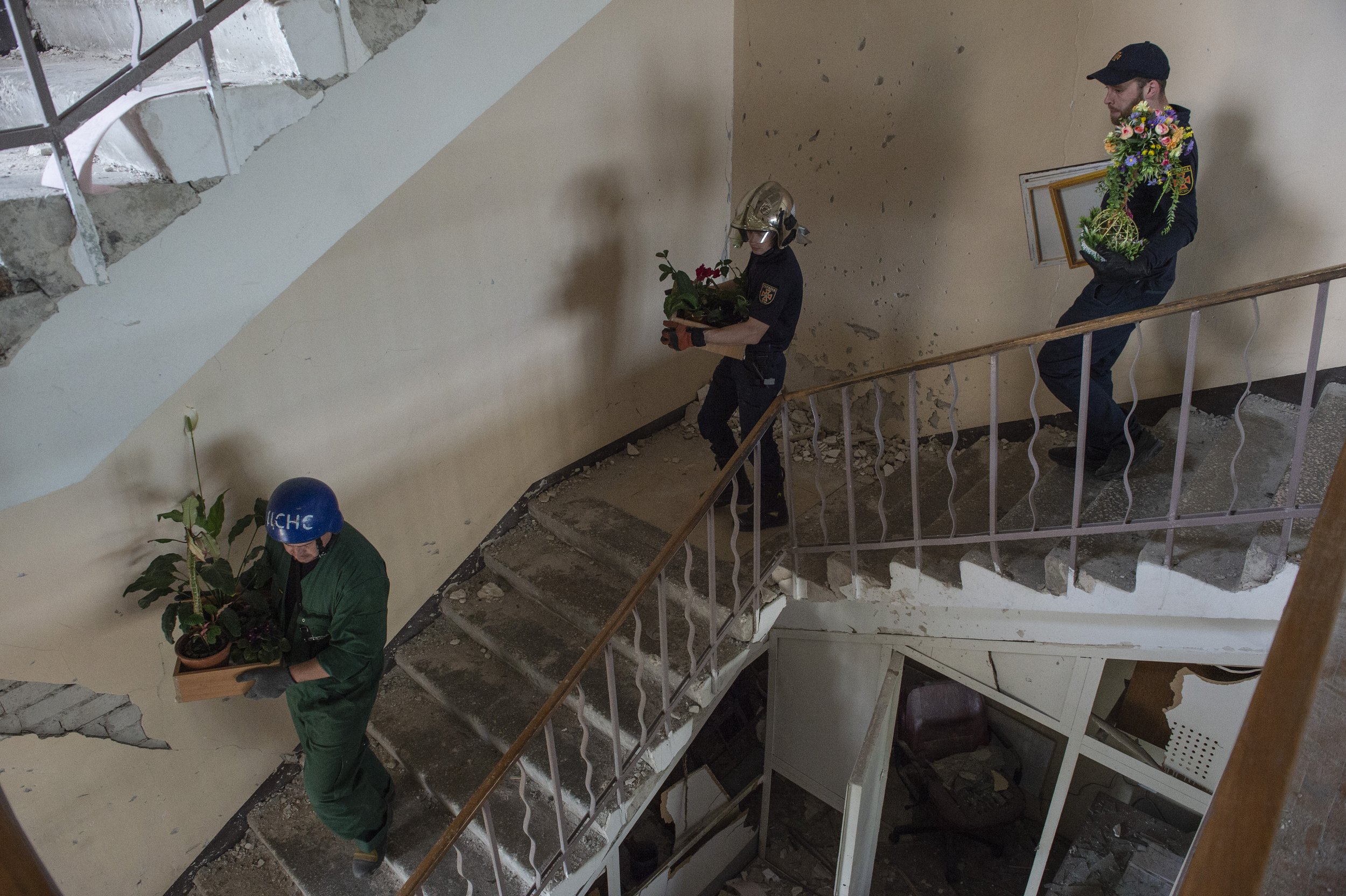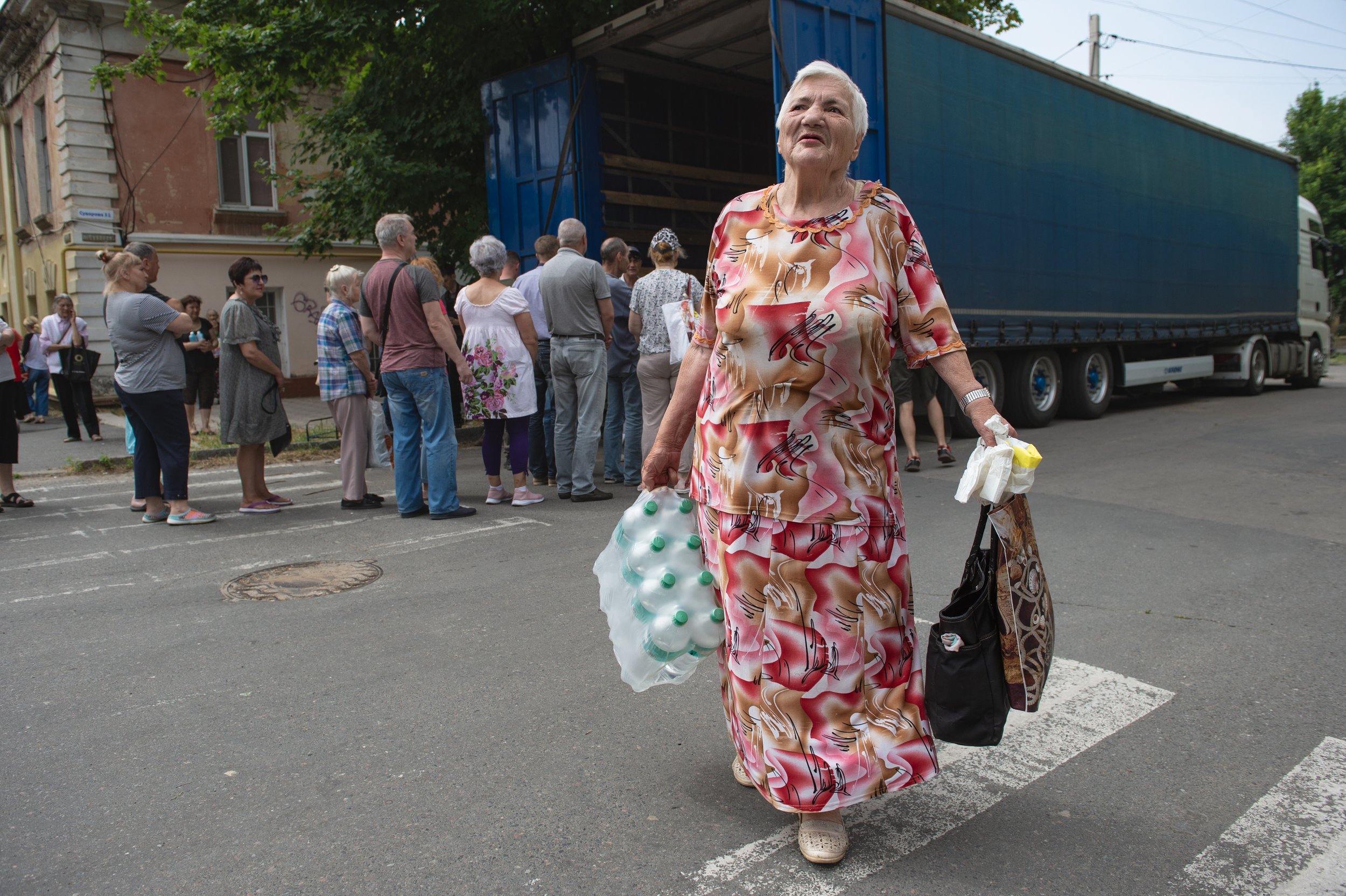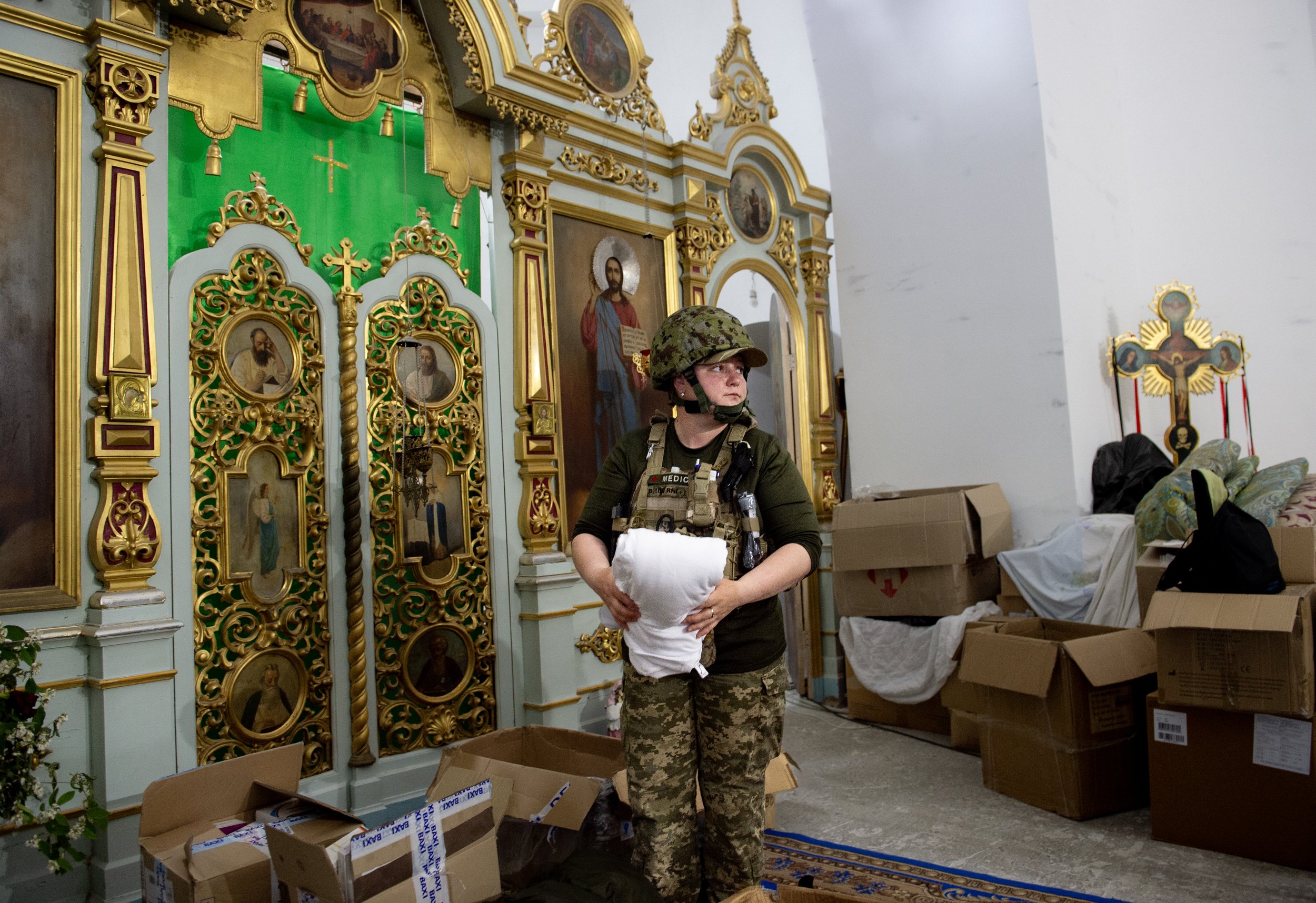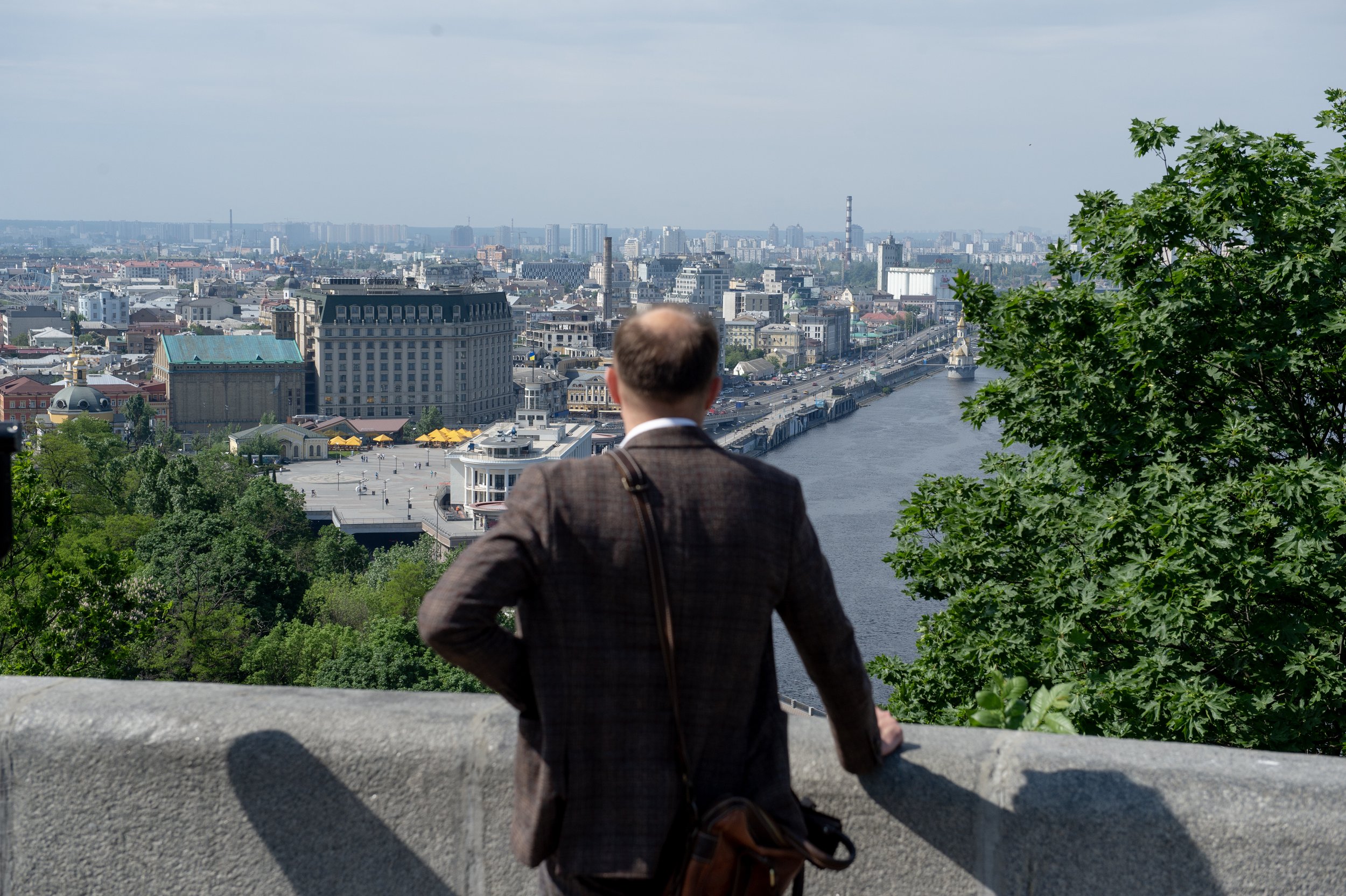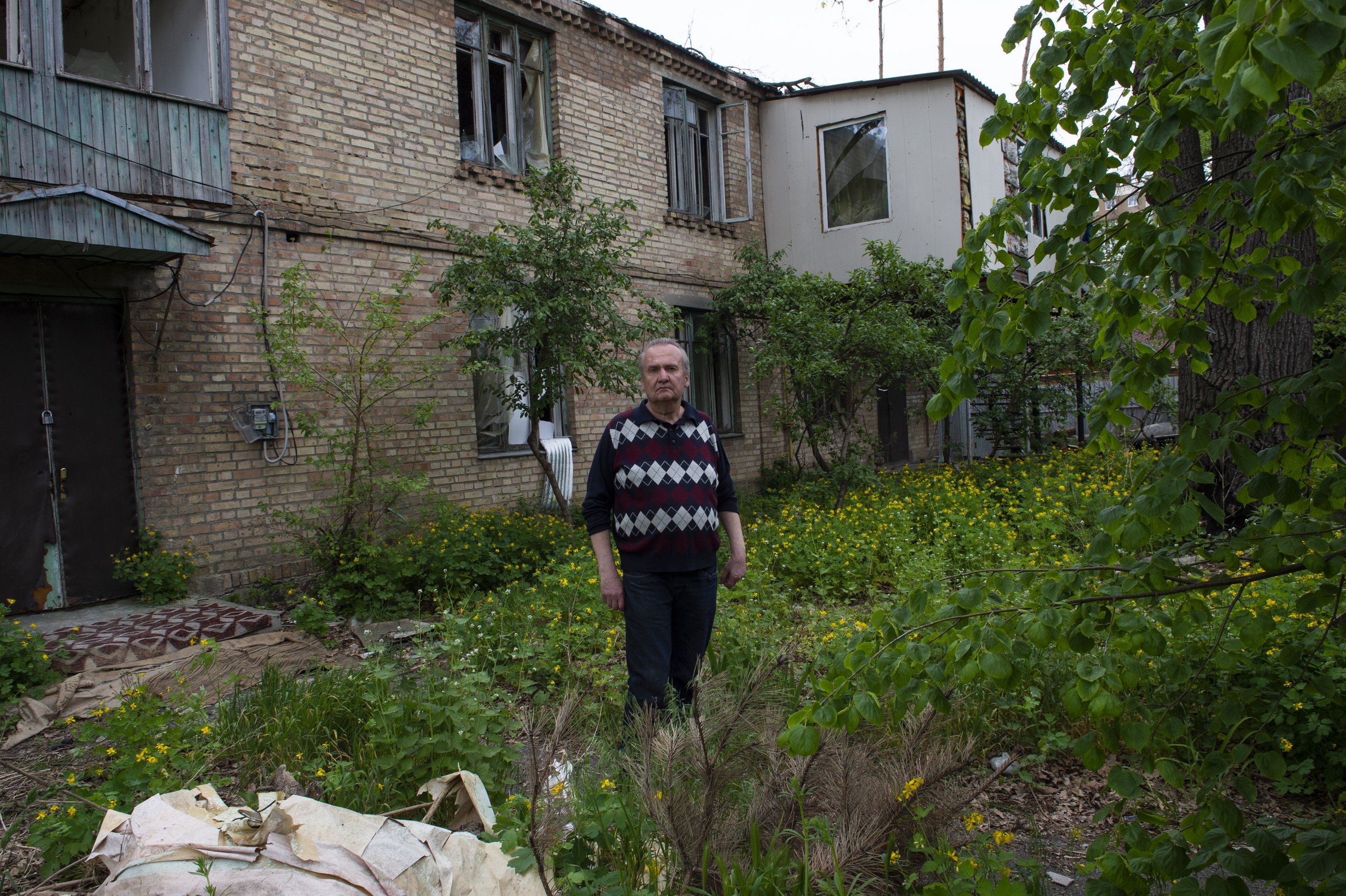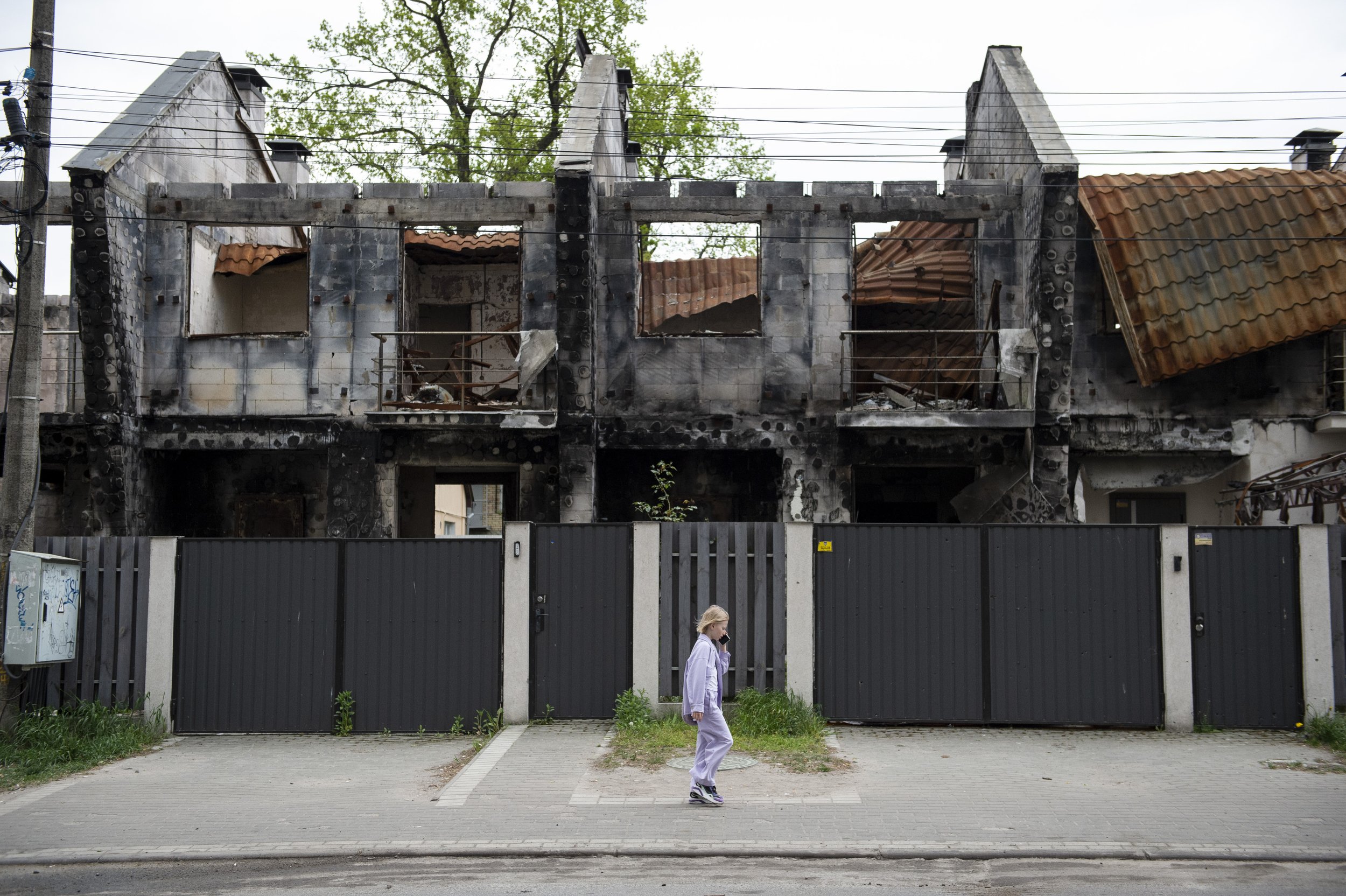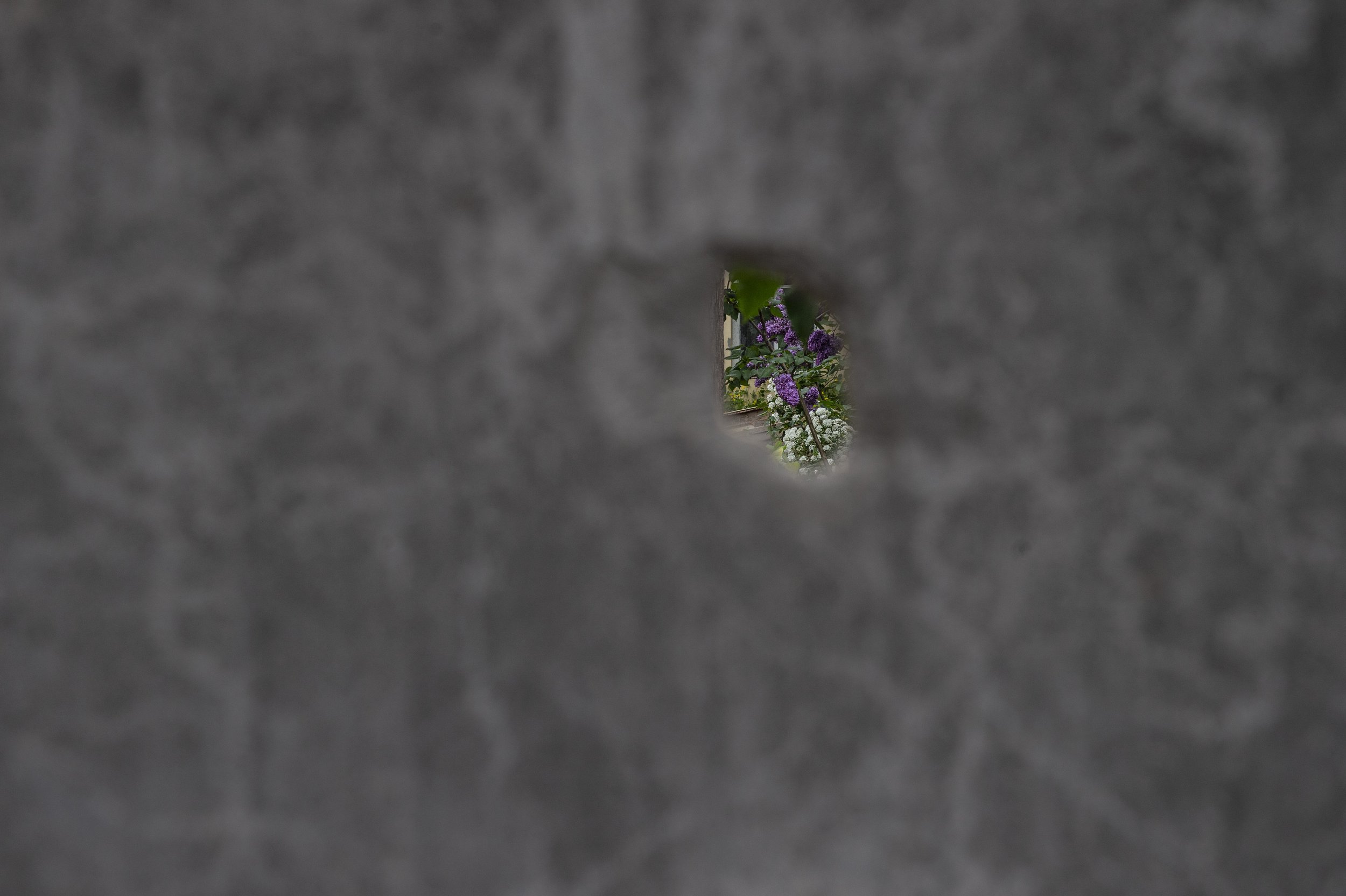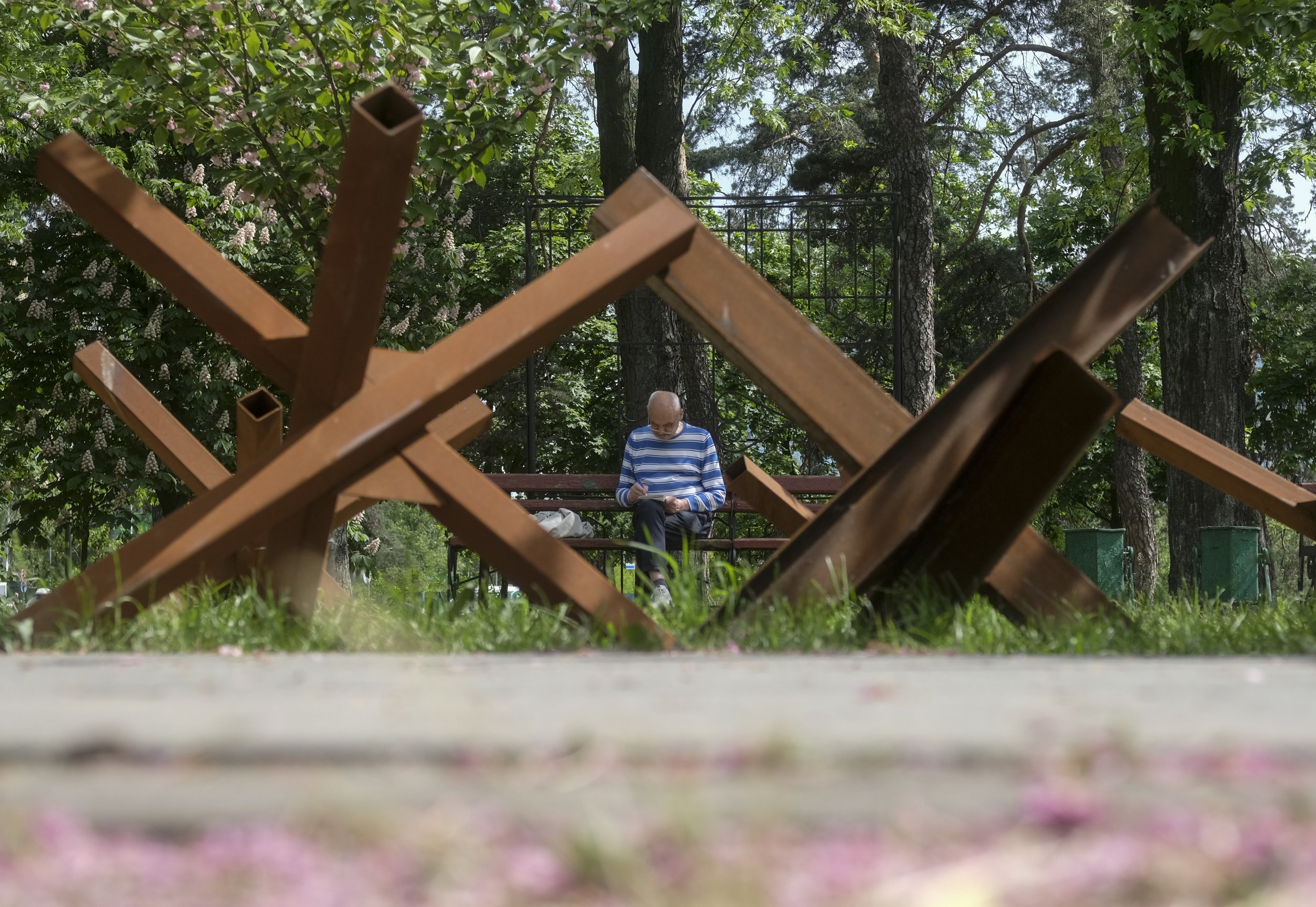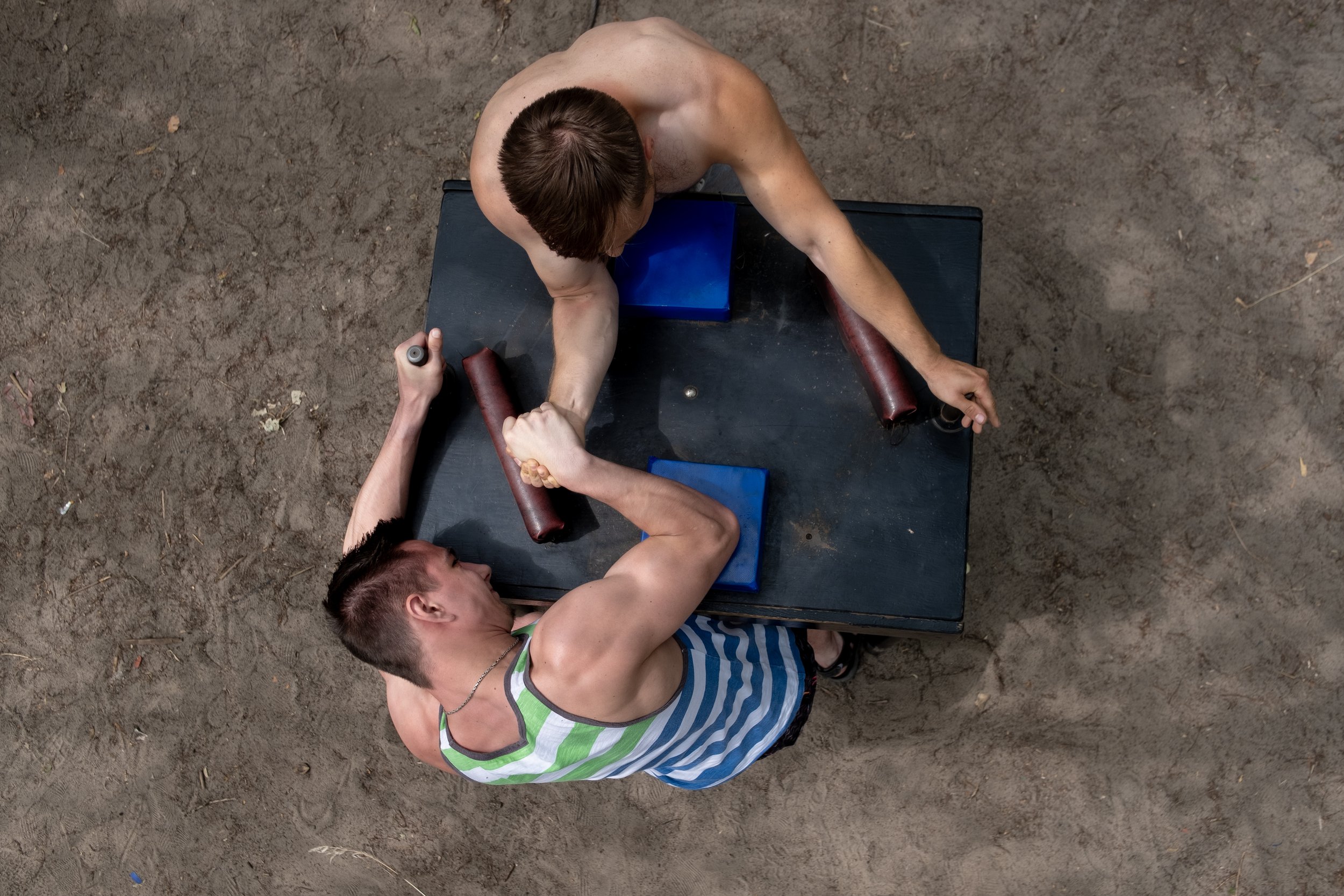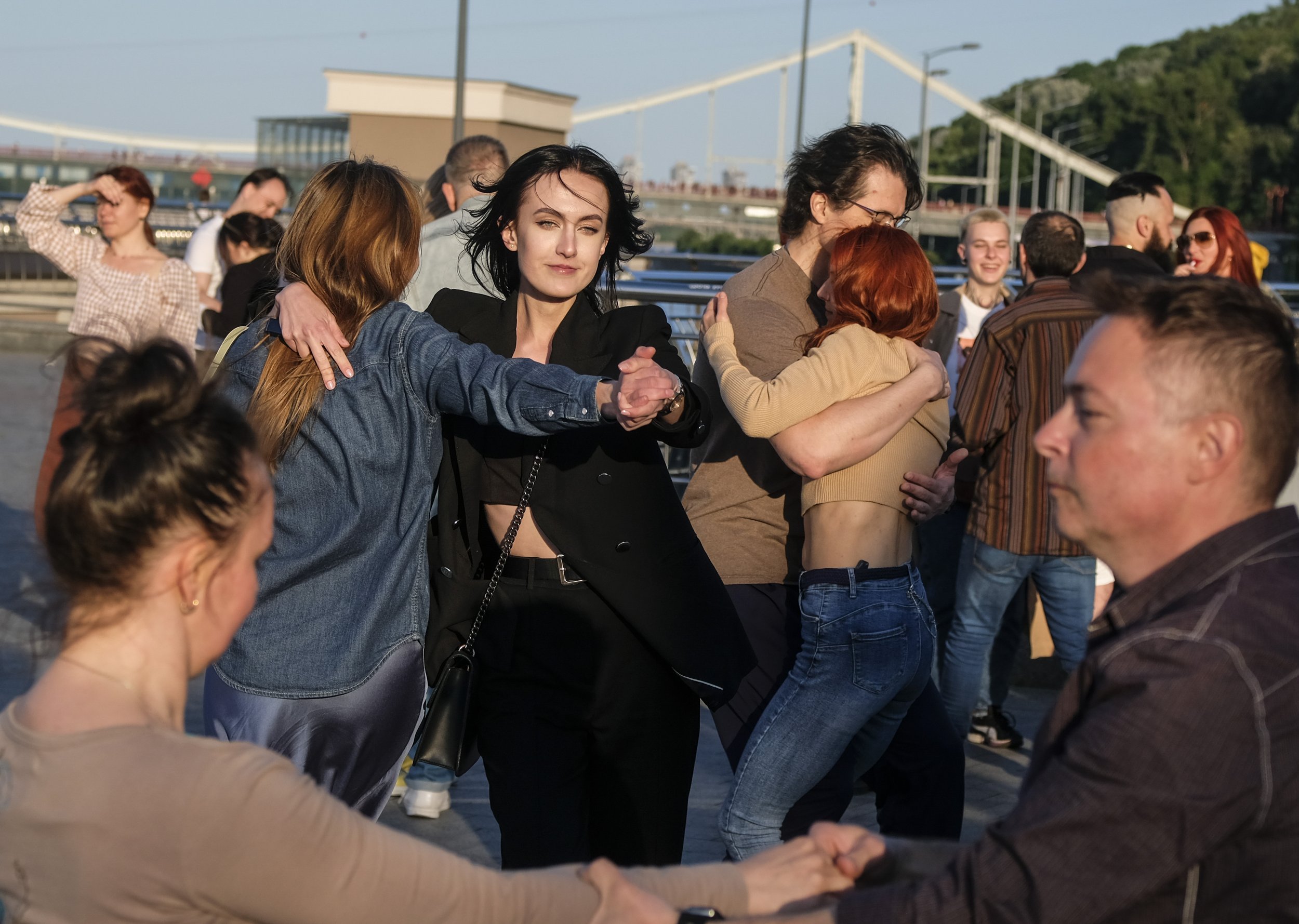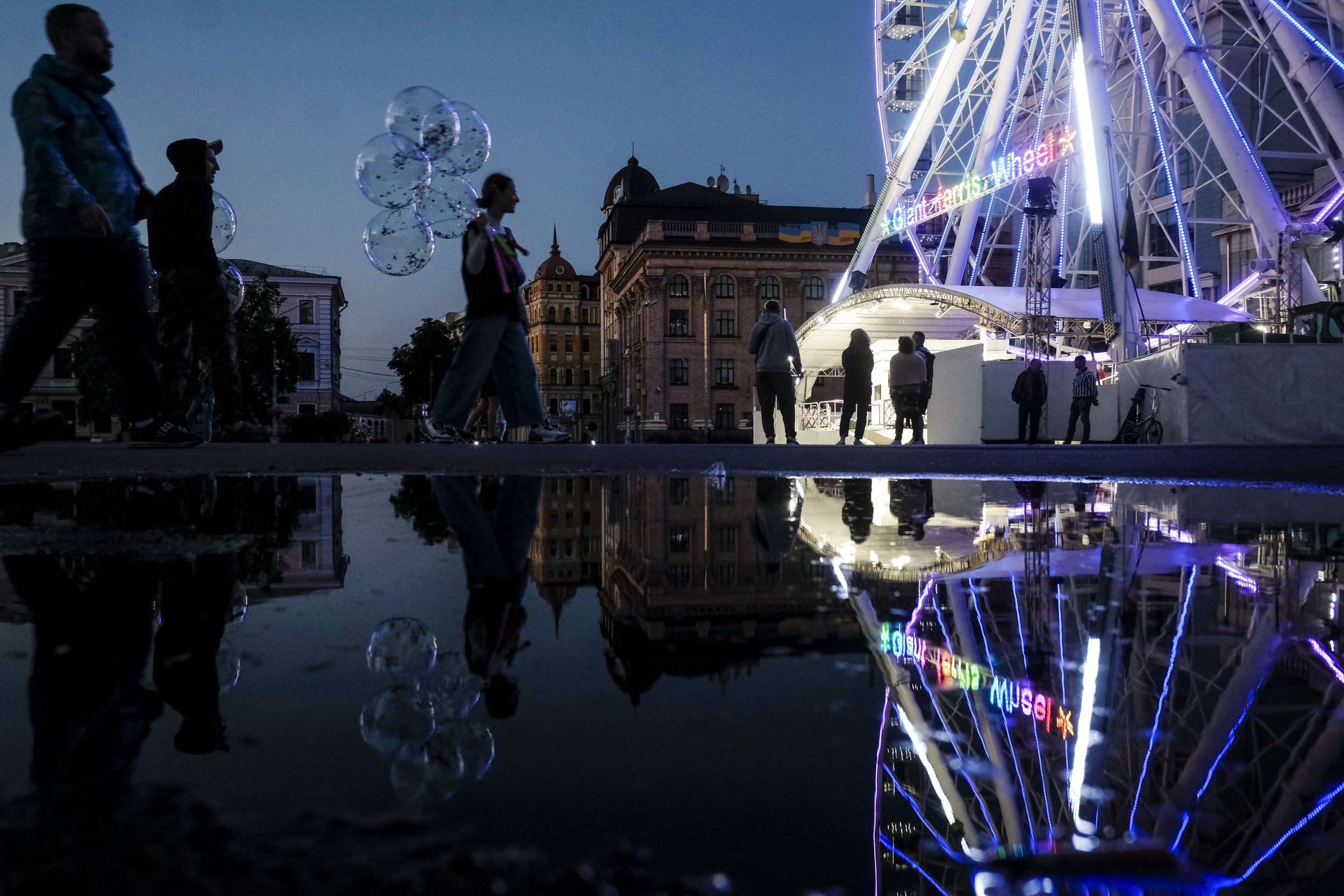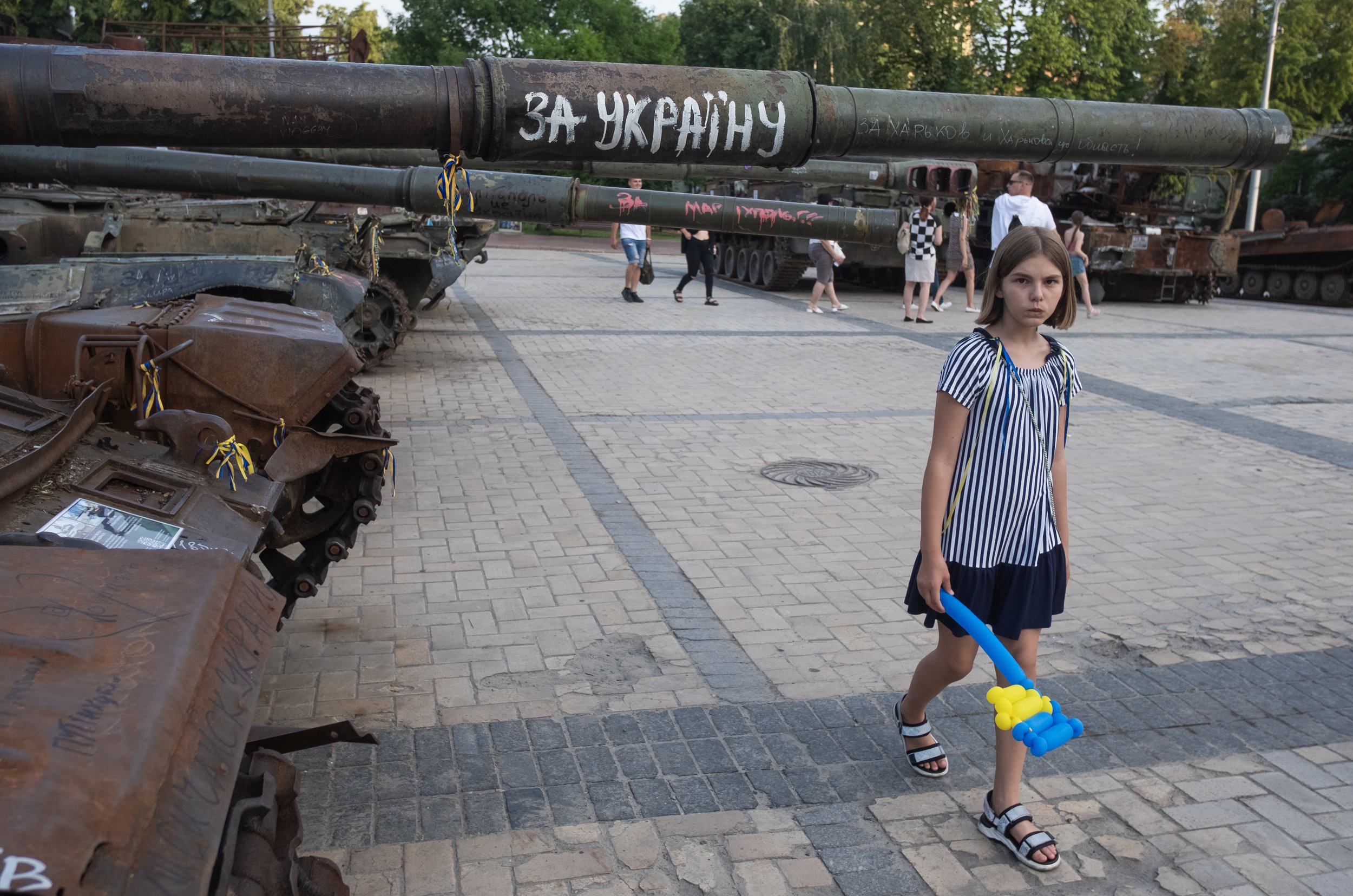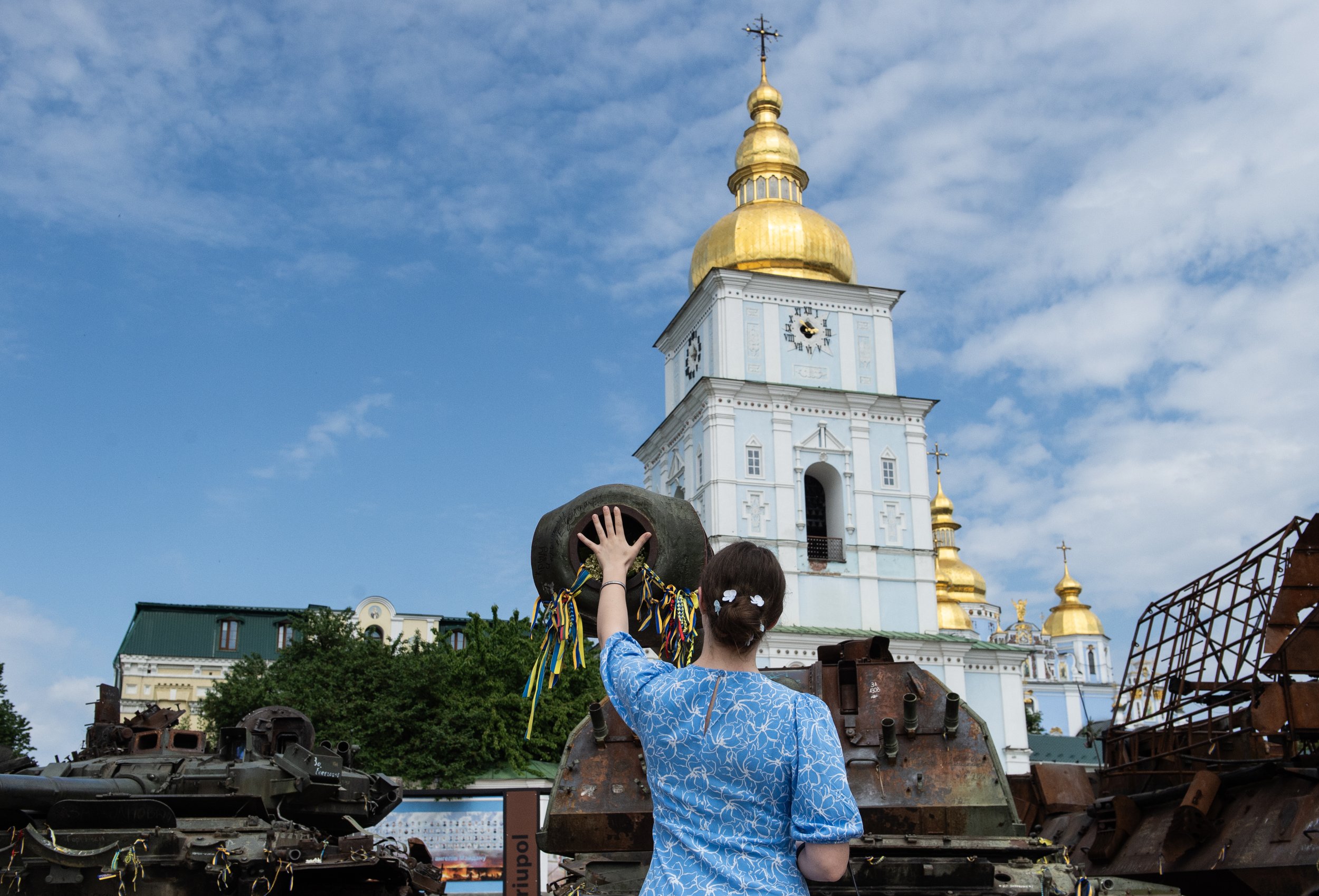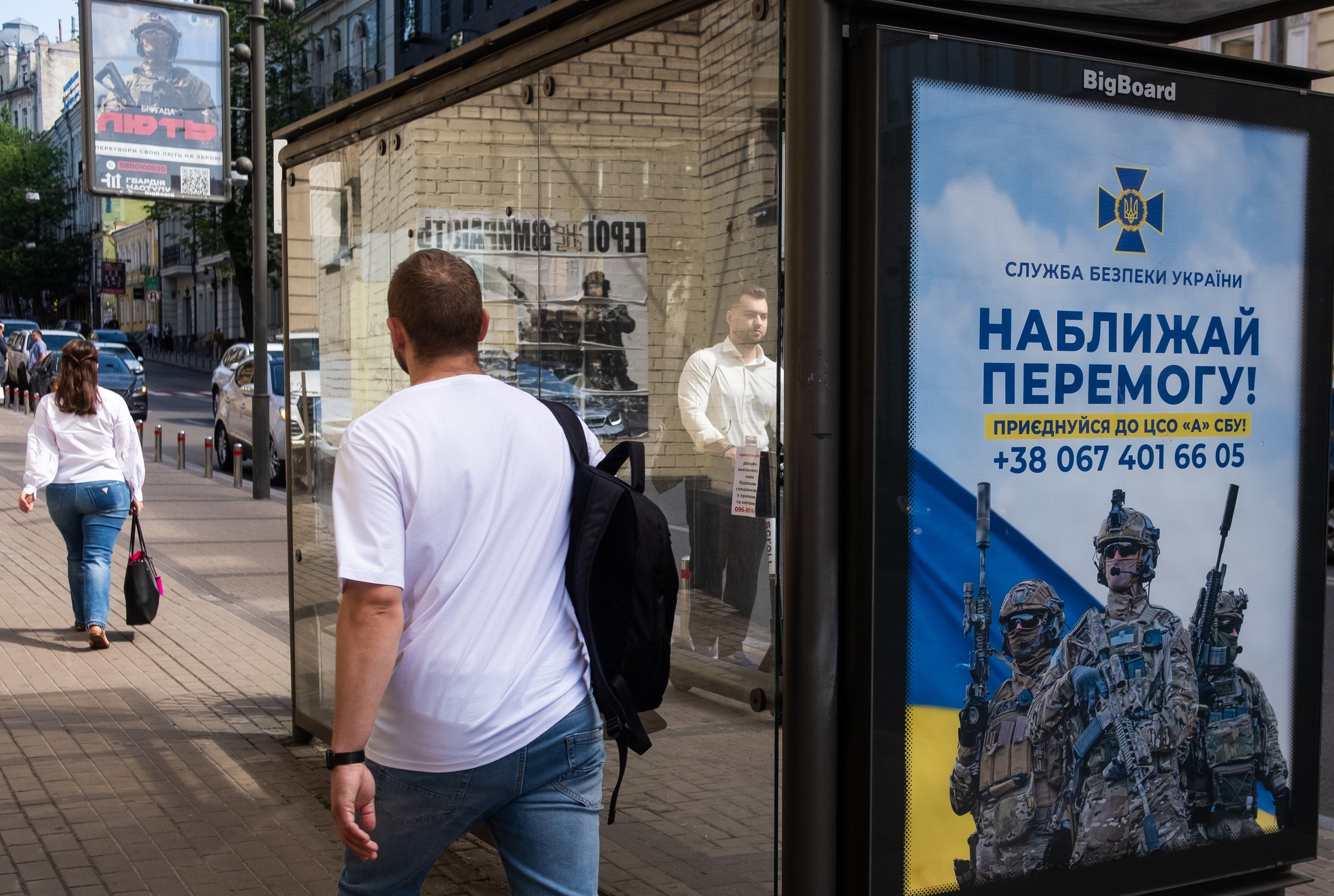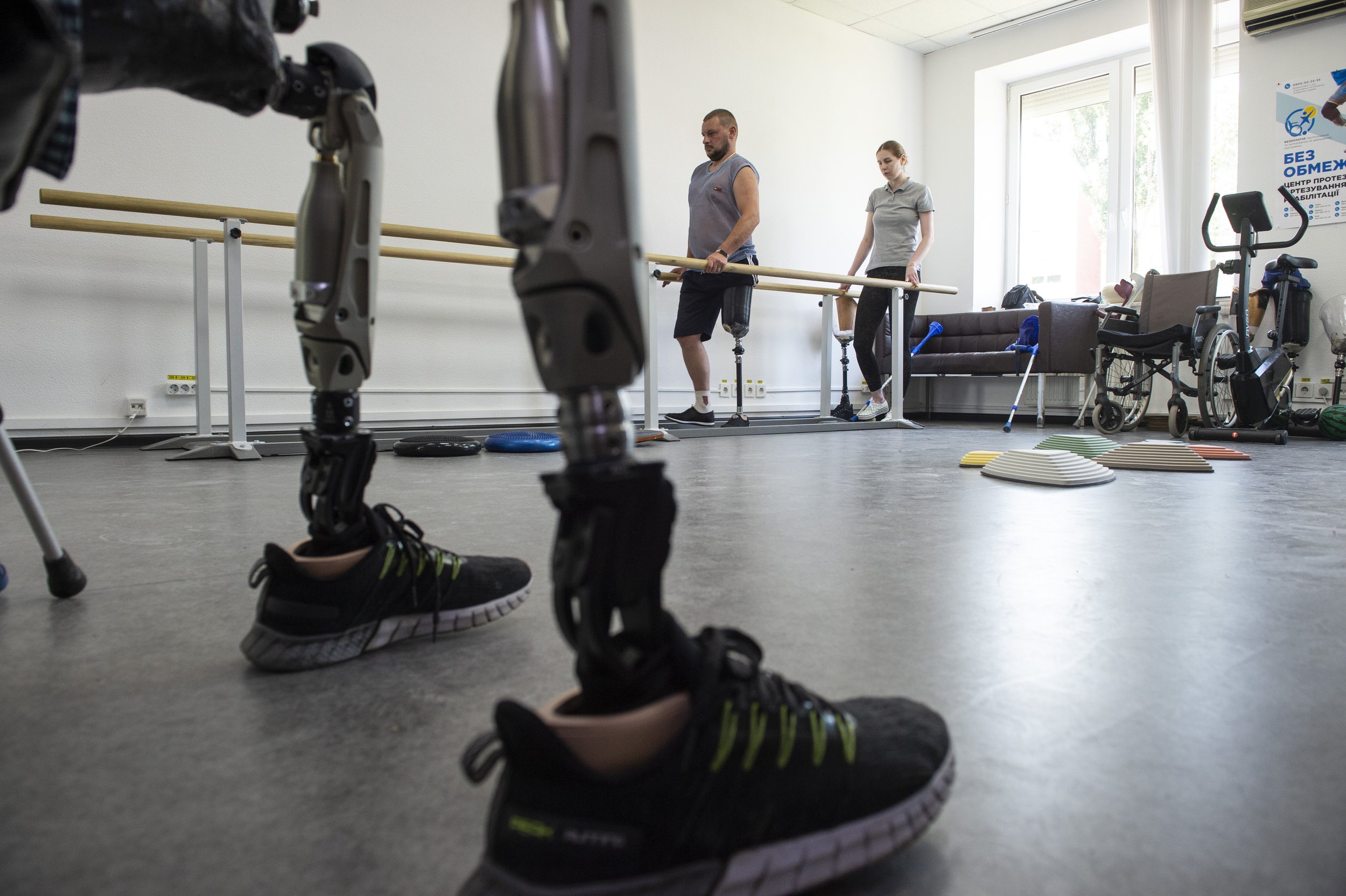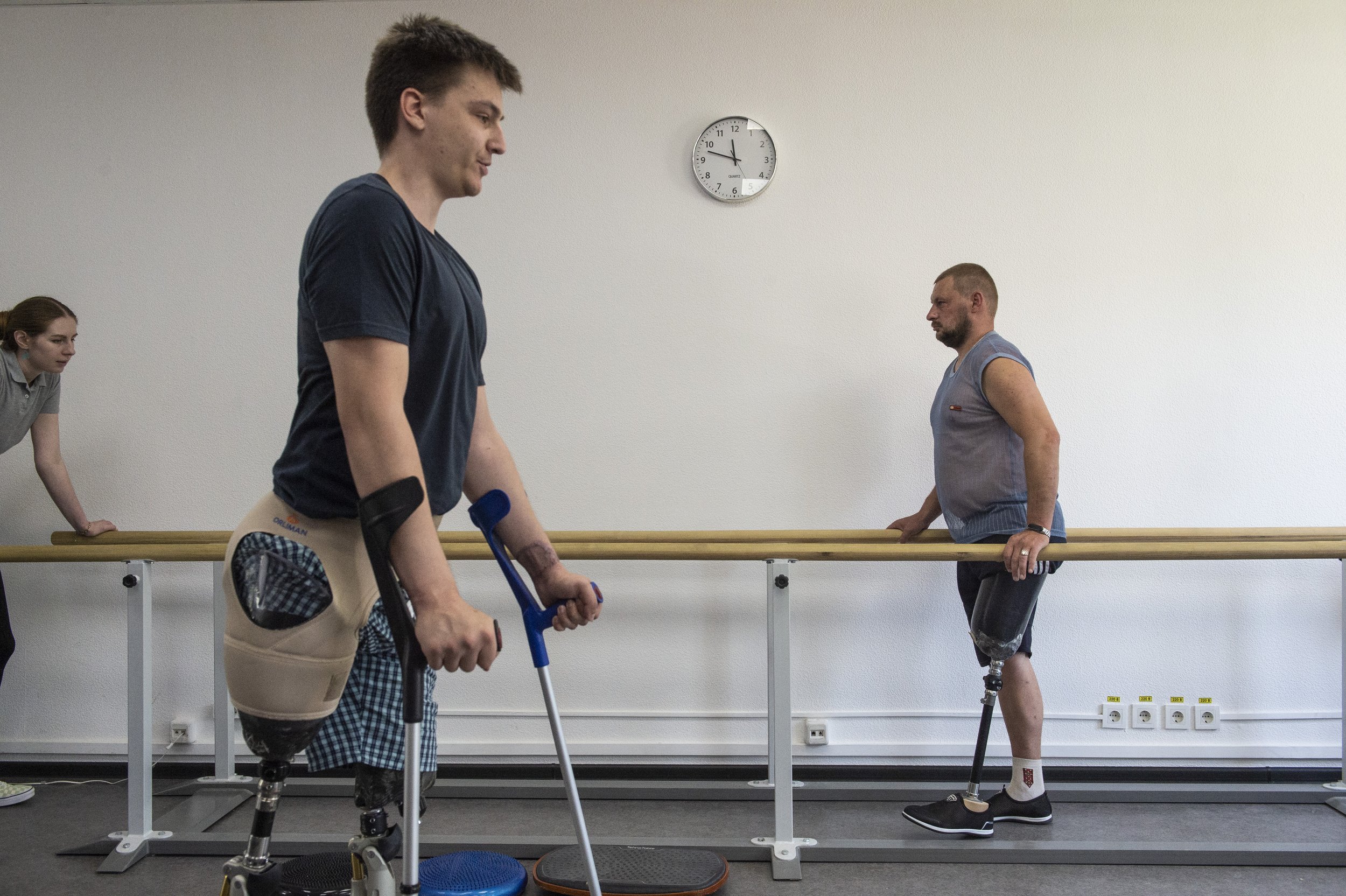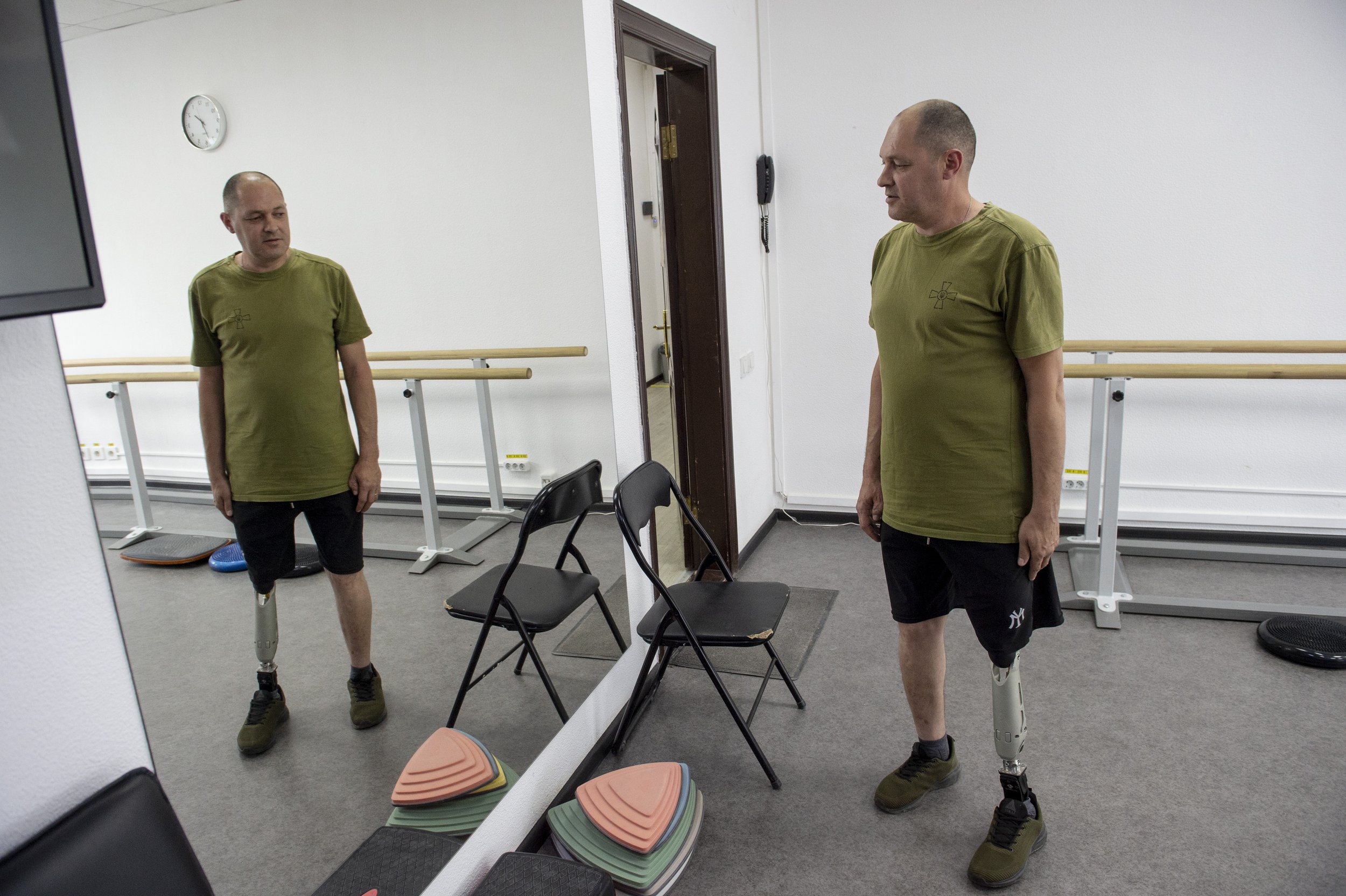UKRAINE: ONE YEAR AFTER THE INVASION
In a nondescript building in the northwest of Kyiv, men and women of all ages are learning to walk again. The Without Limits Clinic, which specializes in prosthetics and rehabilitation, is bustling with activity. In one room, specialists are crafting and adjusting prosthetic arms and legs to the owners' specifications. Across the hall, a physical therapist is working with patients who are learning to walk again. In another room, a consultant is discussing with a patient his wish to return to the front to continue fighting the Russians.
A year earlier, this entire neighborhood was one of the most dangerous places in the world. The main road nearby leads directly to Irpin and Bucha, which experienced untold violence only a year prior as Russian troops occupied the suburbs surrounding Kyiv in their failed attempt to capture the capital in a matter of days. Now, one year later, children play in the park, friends have picnics, traffic is normal, and the roadway that was once the lifeline to Irpin and Bucha is open. Only a few concrete blocks remain of what was once a heavily guarded checkpoint manned by the Ukrainian Army. Like much of Kyiv, the scars of war are present, but life goes on even in times of darkness.
In the early days of the full-scale invasion by Russia, Kyiv was a ghost town, reminiscent of scenes from "28 Days Later" or, for a more apt comparison, New York in March of 2020. However, the distant boom of artillery and rattle of machine gun fire have been replaced by the sounds of city life—music, laughter, and traffic. A year into the war and after the failed attempt to capture Kyiv, life has seemingly returned to normal.
However, a closer look reveals the scars that the horrors of war continue to imprint on the nation and its people. In Kyoto Park on the outskirts of the city center, a man on a park bench turns the pages of a book beneath the colorful flowers of magnolia trees, surrounded by the earthworks of a trench system and barricades reminiscent of World War II. In Irpin, a young girl skips past a row of buildings that were bombed during some of the heaviest fighting of the battle of Kyiv. At night, the city lights up as air raid sirens sound and US-supplied Patriot Air-Defense systems shoot down Russian drones. At the rail station, a woman weeps as she welcomes her boyfriend back from the frontline. The war is still very much present, but it has become a part of life, and the citizens of Kyiv and the rest of Ukraine have learned to live with it.
Following the failed assault on Ukraine's capital and the outpouring of Western military aid that flooded into the country in the months following Putin's invasion, Russia's military began concentrating on capturing territory in the South and the East. Kherson, a city along the Dnipro River near where it empties into the Black Sea, continues to see heavy fighting daily. The mornings are punctuated by artillery duels and firefights across the Dnipro, lunchtime is unpredictable, and from evening to the wee hours of the morning, shelling, missile strikes, snipers, and drone attacks continue to keep Ukrainians in basements and shelters.
"When every day you wake up to war and at night you go to sleep to war, it becomes your life," a woman in Kherson says as she waits for one of the functioning supermarkets to open. Neither she nor the others waiting nearby flinch when the sound of artillery echoes through the street. "This is outgoing fire, not Russian guns."
Life can still be interrupted, especially in places like Kherson. On June 6, 2023, Russian forces destroyed the Kharkovka Dam, located miles up the Dnipro River, which fueled the Zhaporizhia Nuclear Plant and held back millions of gallons of water. The destruction of the dam, labeled by many as 'environmental terrorism,' caused catastrophic flooding in all communities along the Dnipro River. In Kherson, a raging river inundated communities whose residents had endured the hardships of the war until now.
"I've lost it all—my home, my photographs, my clothes, everything! Those creatures, those beasts!" a woman shouts from the edge of the floodwaters. A hundred yards away, brown debris-strewn water reveals only the tops of the windows and the roof of her home.
During rescue operations to save those stranded in their homes by the floods, Russian artillery also targeted them.
In 2023, walking on Ukrainian soil means risking one's life. Missiles, drones, snipers, land mines, or an unfathomable number of unexploded ordnance can strike anytime, anywhere, without differentiation between civilians or soldiers. Life continues, however, for those who call Ukraine home, and hope remains for those who wish to continue calling it home.
In the Without Limits Clinic in Kyiv, soldiers and civilians alike are learning to reclaim their mobility. A doctor is making final adjustments to a prosthetic arm worn by a man in military fatigues, his gray hair and white beard reflecting the hardships of the war.
“He lost his arm in Bakhmut last winter, but he is going back to the front next week.” The doctor proudly explains, then turns to the man who laughs.
"Slava Ukraini," he says.
The doctor stops his work and looks up at the soldier then to me, and smiles,"Hoirem Slava."

